
 Blues/Jazz guitarist Robben Ford merges styles to redefine the term “fusion†music. His sound, delivery and conception are all his own – as unmistakable and personal as a fingerprint. He chose a deliberate reinterpretation of the unusual Fender Esprit Ultra as the basis for his signature instrument (the Fender Robben Ford Signature model), which reflects Robben’s discriminating and diverse as both a soloist and rhythm player.
Blues/Jazz guitarist Robben Ford merges styles to redefine the term “fusion†music. His sound, delivery and conception are all his own – as unmistakable and personal as a fingerprint. He chose a deliberate reinterpretation of the unusual Fender Esprit Ultra as the basis for his signature instrument (the Fender Robben Ford Signature model), which reflects Robben’s discriminating and diverse as both a soloist and rhythm player.
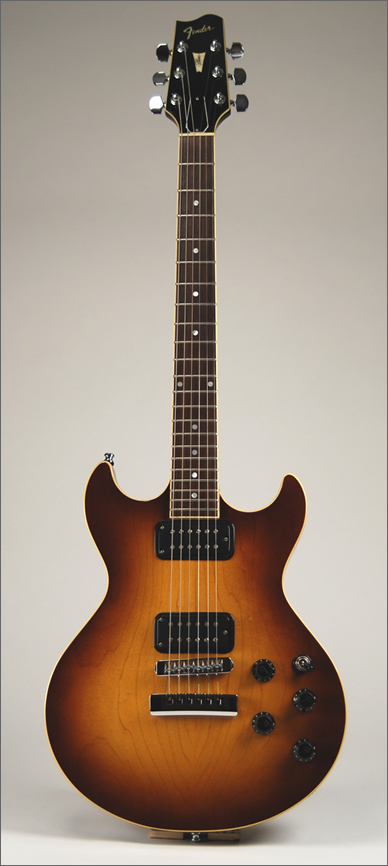 Designed in the mid-1980’s, the Esprit effectively reconciled the differences between a blues, jazz and rock guitar, making it ideal for Robben’s varied musical tangents. He was originally drawn to the smaller body size, double-cutaway comfort and remarkable playability of the Esprit as an alternative to the larger, honky-sounding semi-hollow-body he had been playing. Though the Esprit was discontinued by the late 1980’s, Robben remained an ardent user.
Designed in the mid-1980’s, the Esprit effectively reconciled the differences between a blues, jazz and rock guitar, making it ideal for Robben’s varied musical tangents. He was originally drawn to the smaller body size, double-cutaway comfort and remarkable playability of the Esprit as an alternative to the larger, honky-sounding semi-hollow-body he had been playing. Though the Esprit was discontinued by the late 1980’s, Robben remained an ardent user.
The History of the “Master Series” Â (by Gary Koehler) is as follows;
Approximately 25 years ago, Dan Smith had an idea. He conceptualized a solidbody guitar with routed chambers. These chambers would, in theory, provide a more resonant tonal characteristic. He also formulated and designed a basic shape for the guitar.
Then, in the early 1980s, Fender became interested in producing and marketing instruments which would be viewed as alternatives to those offered by Gibson. These guitars would not be copies, of course, but highly playable guitars with versatile electronics and other features previously unavailable on instruments manufactured by Fender. The company asked Smith to submit a concept, and what followed was an adventurous effort to produce a new line of guitars unique to the Fender’s catalog. The line was called the Master Series.
Two of Smith’s designs were solidified – the Flame and the Esprit (pronounced espree). Both featured alder bodies with routed tone chambers, maple tops, and set-in necks.
The Flame’s body is slightly larger than a Gibson Les Paul, and features two slightly offset cutaways, similar to Gibson’s SG. Two special-design humbucking pickups were developed via Schaller, as was a tailpiece with fine-tuners. The intention was to offer an electronically versatile alternative to the Gibson Les Paul.
The Esprit’s body is slightly larger than the Flame’s, and features two symmetrical cutaways. As with the Flame, two special-design Schaller humbuckers were employed in conjunction with the fine-tuning tailpiece. This instrument was intended as an alternative to the Gibson ES-335.
A third model was an archtop designed by the late James D’Aquisto. His design included some imaginative, versatile features and stands as a testament to D’Aquisto’s creativity as a luthier.Â
These three designs were marketed together as the Fender Master Series.
Once designs were approved, the company turned its attention to issues of manufacturing and production. Fender decided that, at that time, it did not possess the technology to build the instruments. The Japanese company Fujigen Gakki (which served as an Ibanez facility) was contracted by Fender to manufacture the line.
Fender ultimately decided to produce three models of both types. The suffixes Standard, Elite, and Ultra were added under the headings Flame and Esprit. Standards featured dot inlays and chrome tuners. The Elites featured diamond-flake inlays and pearloid-button tuners. And the Ultras had split-block shell inlays, ebony-button tuners and gold hardware. Finish options on the Standards were limited to black, autumn sunburst, and cherry sunburst. The Elite and Ultra were also available in white or pink frost, and candy red or candy green metallic burst.
Smith said Fender offered the Kahler tremolo bridge as an option on these guitars. He recalls Fender made the modification post-production, and relatively few were shipped.
He was unable to find records indicating quantities made, but estimated that between late 1983 and 1985, a few thousand were manufactured. In retrospect, Smith feels the guitars were successful in regard to quality and public perception. The line’s downfall was the sale and subsequent transitional period experienced by Fender. In 1986, Robben Ford was brought on as an endorser of the Esprit model, then Fender reworked the production concept and dubbed the guitar the Robben Ford signature model.
In its incarnation as the Robben Ford signature model, it has retained many of the Ultra’s significant features and deluxe appointments, as specified by Robben, including the Ebony fingerboard with fancy Mother-of-Pearl split-block inlays, Ebony tuning key pegs, multiple binding on the headstock, neck and body and gold-plated hardware. The solid Alder body with a carved Spruce top and built-in acoustical tone chambers is a clever variation on the classic solid-body construction theme of mahogany and maple and is a vital component in producing the rich and consistent sustaining Robben Ford solo guitar voice.
Another is the two-humbucker pickup configuration which yields both a mellow, neck-pickup jazz sound as well as a robust, bridge-pickup blues-rock tone. The coil-splitting switch provides interesting thinner and twangier single-coil timbres ideal for rootsy rock and roll, R&B and funky rhythm comping.
Current values of these rare and collectable guitars are in the £1500-2000 range.
![]()
![]() The Dan Armstrong Plexiglass was a very odd guitar originally made from 1969 to 1971 as an effort by popular amplification company Ampeg to draw in some more sales than their then-ailing amp lines were. The guitars came about from legendary guitar builder and repairer Dan Armstrong posing Ampeg the question:
The Dan Armstrong Plexiglass was a very odd guitar originally made from 1969 to 1971 as an effort by popular amplification company Ampeg to draw in some more sales than their then-ailing amp lines were. The guitars came about from legendary guitar builder and repairer Dan Armstrong posing Ampeg the question: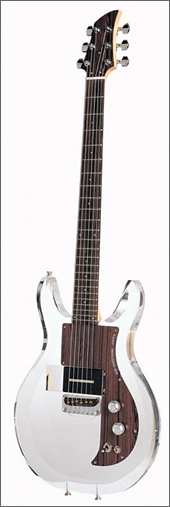 Ampeg then asked Armstrong to design some guitars and basses for them to market. The design he came up with resides somewhere between a Strat and an SG, but with a surreal twist: the body was made entirely of a solid slab of Plexiglas (the trade name for a type of rigid, clear plastic) and the scratchplate of a piece of the wood-grain replica pattern Formica, popular on furniture in the 1960s and 70s.
Ampeg then asked Armstrong to design some guitars and basses for them to market. The design he came up with resides somewhere between a Strat and an SG, but with a surreal twist: the body was made entirely of a solid slab of Plexiglas (the trade name for a type of rigid, clear plastic) and the scratchplate of a piece of the wood-grain replica pattern Formica, popular on furniture in the 1960s and 70s.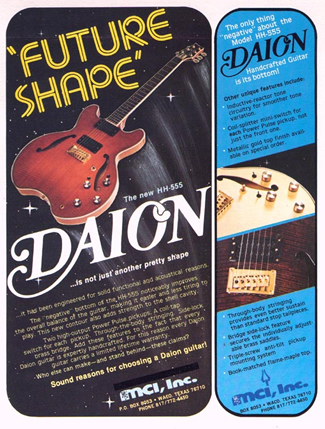 One of the better known (and I use that term loosely) Daion models was the semi-solid ES-335-alike 555 Headhunter, which featured an innovative third cutaway on the bottom of the body.
One of the better known (and I use that term loosely) Daion models was the semi-solid ES-335-alike 555 Headhunter, which featured an innovative third cutaway on the bottom of the body.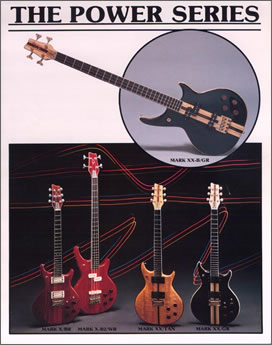
 Montrose, a San Franciscan, hasn’t seen his guitar (which he bought from J. Geils) since that night on Oct. 10, 1972 when he played Dudley, Mass. with the Edgar Winter Band … until now. The San Francisco musician — who has played with Herbie Hancock, Van Morrison and others — claims that after 37 years of scouring and thousands of dollars spent on private detectives, his guitar has turned up in the possession of British musician and guitar collector Gary Moore — and, last week,Â
Montrose, a San Franciscan, hasn’t seen his guitar (which he bought from J. Geils) since that night on Oct. 10, 1972 when he played Dudley, Mass. with the Edgar Winter Band … until now. The San Francisco musician — who has played with Herbie Hancock, Van Morrison and others — claims that after 37 years of scouring and thousands of dollars spent on private detectives, his guitar has turned up in the possession of British musician and guitar collector Gary Moore — and, last week,  Designed in the mid-1980’s, the Esprit effectively reconciled the differences between a blues, jazz and rock guitar, making it ideal for Robben’s varied musical tangents. He was originally drawn to the smaller body size, double-cutaway comfort and remarkable playability of the Esprit as an alternative to the larger, honky-sounding semi-hollow-body he had been playing. Though the Esprit was discontinued by the late 1980’s, Robben remained an ardent user.
Designed in the mid-1980’s, the Esprit effectively reconciled the differences between a blues, jazz and rock guitar, making it ideal for Robben’s varied musical tangents. He was originally drawn to the smaller body size, double-cutaway comfort and remarkable playability of the Esprit as an alternative to the larger, honky-sounding semi-hollow-body he had been playing. Though the Esprit was discontinued by the late 1980’s, Robben remained an ardent user.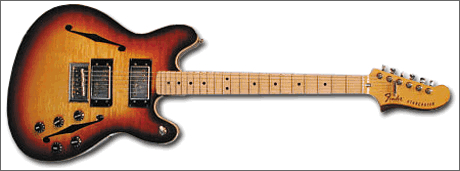
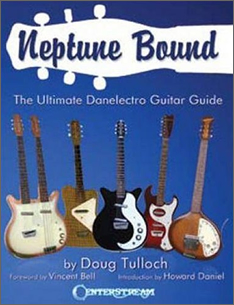
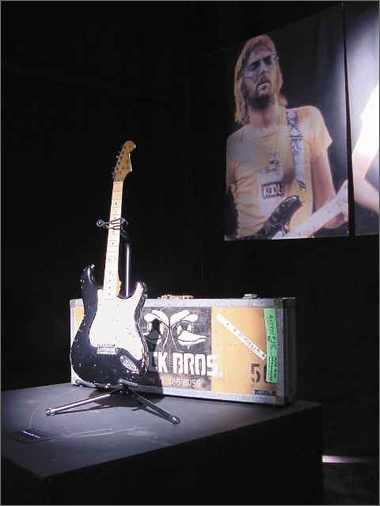 The “Legends Collection” will feature three of rock’s most famous guitars – Eric Clapton’s “Blackie” Fender Stratocaster and Gibson ES-335, as well as Stevie Ray Vaughan’s “Lenny” Fender Stratocaster. Purchased for over $2.4 million from the Clapton Crossroads Centre charity auction at Christies New York in 2004, these three guitars are among the most treasured guitars in rock history.
The “Legends Collection” will feature three of rock’s most famous guitars – Eric Clapton’s “Blackie” Fender Stratocaster and Gibson ES-335, as well as Stevie Ray Vaughan’s “Lenny” Fender Stratocaster. Purchased for over $2.4 million from the Clapton Crossroads Centre charity auction at Christies New York in 2004, these three guitars are among the most treasured guitars in rock history.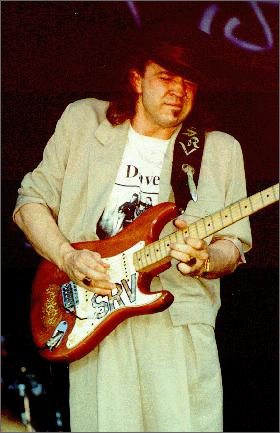
 The instruments, which are smaller and lighter than standard guitars, sell for between $265 and $735 and have found a following among blues aficionados who can’t get enough of the warm sound they provide.
The instruments, which are smaller and lighter than standard guitars, sell for between $265 and $735 and have found a following among blues aficionados who can’t get enough of the warm sound they provide.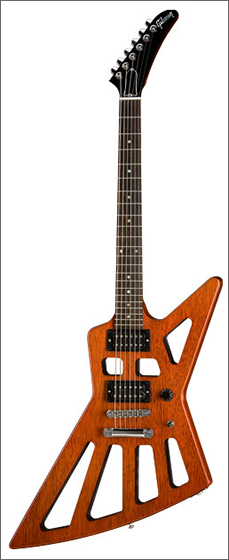 The Holy Explorer is a standard, natural finish Explorer with seven gaping holes cut through the body. There is also a Flying V which has had a similar makeover. The guitars feature the usual attributes of the Flying V and Explorer designs- mahogany bodies and necks, 496R and 500T pickups, and the usual 22-fret rosewood fingerboard. But, those holes…
The Holy Explorer is a standard, natural finish Explorer with seven gaping holes cut through the body. There is also a Flying V which has had a similar makeover. The guitars feature the usual attributes of the Flying V and Explorer designs- mahogany bodies and necks, 496R and 500T pickups, and the usual 22-fret rosewood fingerboard. But, those holes…